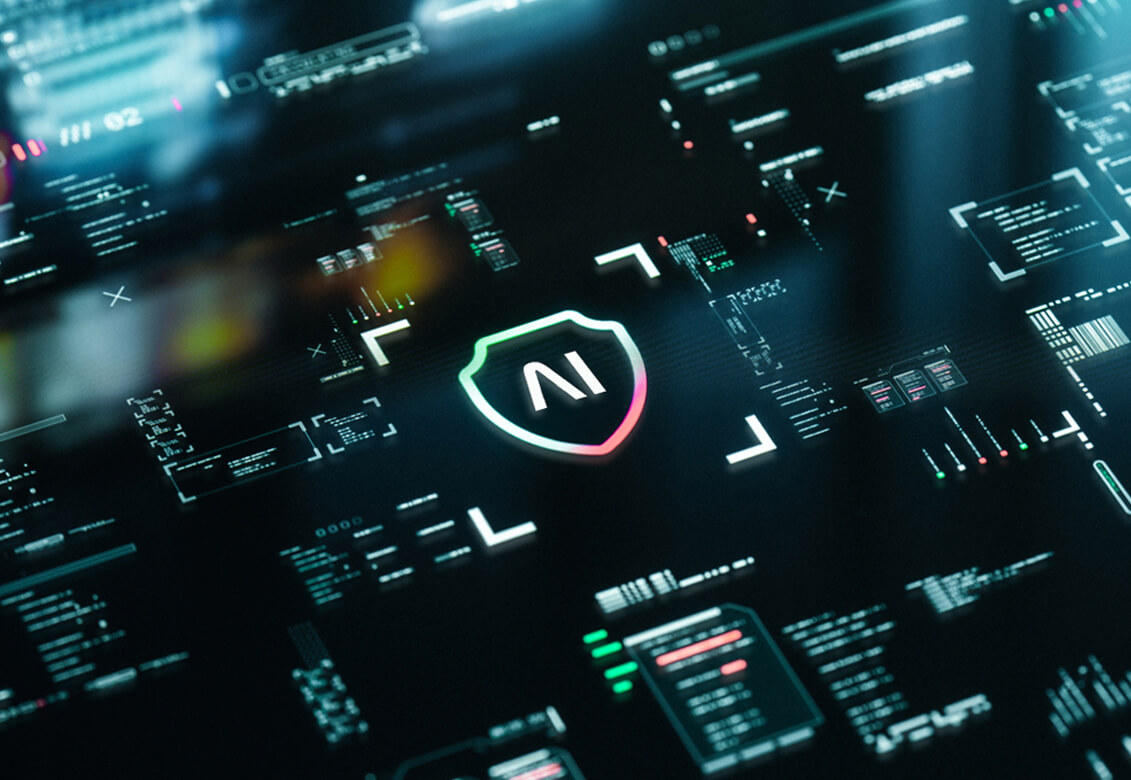
April 8, 2025
How AI Impacts Data Security: Risks, Rewards, & What SMBs Should Know
AI and data security go hand in hand. And for small and mid-sized businesses, the connection is increasingly difficult to ignore. As AI tools become more accessible and widely used, they’re showing up in everything from sophisticated cybersecurity platforms to day-to-day process operations. But while AI can help you detect threats faster and work more efficiently, it also introduces new risks. Here’s what you need to know about how AI is changing the way businesses protect their data—and what steps you can take to stay ahead.
The Challenges: New Risks to Watch for in AI and Data Security
While AI can supercharge your security posture, it’s not without its vulnerabilities. Here are three of the most pressing concerns:
1. Data Leakage
AI systems often require large datasets to train effectively. When those datasets include sensitive or regulated information, the risk of exposure increases. Without strict security controls, training data can be leaked or accessed without authorization.
2. Emerging Threats
Cybercriminals are now using AI themselves—creating advanced threats like adaptive malware and hyper-personalized phishing attacks. These threats evolve quickly and can be difficult for traditional security systems to catch.
3. Compliance Complexity
The regulatory landscape around AI is still developing. Ensuring your AI systems meet data protection laws like GDPR or HIPAA can be difficult, especially as the technology outpaces policy.
The Opportunities: How AI Improves Security Defenses
Fortunately, AI is also a powerful ally in protecting your data. Here’s how it can support your security efforts:
1. Intrusion Detection & Prevention
AI monitors network traffic and user behavior in real time, flagging any activity that deviates from the norm. This enables faster detection and a quicker response to potential breaches.
2. Enhanced Threat Detection
With machine learning, AI can analyze massive volumes of data to identify malware, phishing attempts, or suspicious activity—often more accurately than traditional tools.
3. Automated Incident Response
AI can automate the process of isolating affected systems, blocking harmful traffic, and alerting security teams—saving critical time during a threat event.
4. Predictive Analytics
By studying patterns and historical data, AI can predict and prevent future attacks. This proactive approach helps organizations stay ahead of evolving threats.
What SMBs Should Do: Strategic Recommendations
To stay secure while leveraging AI, businesses should:
- Implement robust data security controls. Use encryption, access controls, and frequent audits to protect training data.
- Stay ahead of AI-driven threats. Monitor cybersecurity trends and update your protocols regularly.
- Ensure compliance from the start. As AI tools evolve, verify they meet industry standards and regulatory requirements.
Why SMBs Need the Right Partner
AI is a powerful tool, but it’s not plug-and-play—especially for SMBs without internal security or cloud teams. That’s where we come in.
At Trofeo, we help you assess your current risks, plan proactively, and implement right-sized cloud and cybersecurity solutions. Our integrated platform streamlines security operations and enhances visibility. With generative AI baked into our tools, we deliver real-time insights and actionable recommendations that keep your business one step ahead.
Even better, we reduce complexity by consolidating security tools under a single vendor—giving you better performance and lower overhead.
Ready to Strengthen Your AI-Driven Security Strategy?
At Trofeo, we offer managed security services that are built for growing businesses like yours. Let us help you turn AI into a strength—not a risk. Contact us today to learn how we can protect your business in an AI-powered world.
References
Microsoft Guide for Securing the AI-Powered Enterprise | Security Insider
The Dark Side of AI: Cybersecurity Threats and Privacy Concerns


